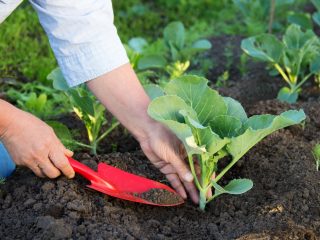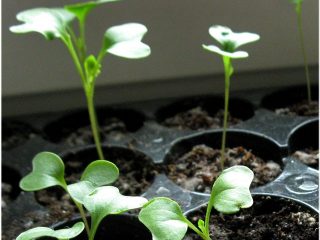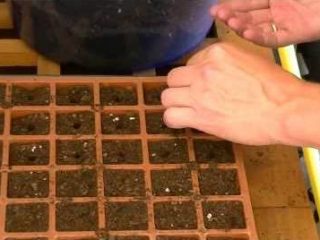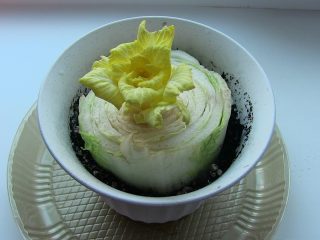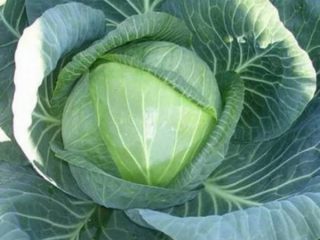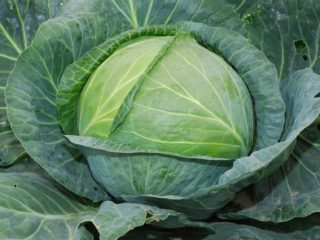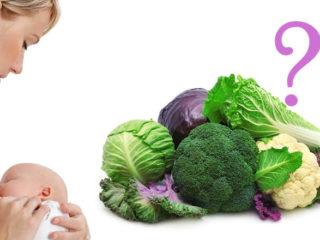Content
Broccoli differs from cauliflower in appearance. In broccoli, the inflorescences are collected into loose heads of rich green or purple color. Cauliflower heads are quite dense, white, yellowish or greenish in color. The difference is that it takes longer to mature. On the other hand, in terms of productivity, the colored form is significantly ahead of broccoli. There are certain differences in the chemical composition - the most characteristic ones are described below.
Cauliflower and Broccoli: Are They the Same or Not?
Both types of cabbage belong to the cruciferous family (Brassicaceae). But these are different cultivars. They are noticeably different from each other in appearance. Even at first glance, the difference is noticeable - in cauliflower, the inflorescences fit tightly, forming a white or yellowish head.
Broccoli produces inflorescences in the form of loose formations of rich green or purple color. Both vegetables are eaten; they taste approximately the same. But the texture is different - the colored variety is denser, while broccoli, on the contrary, is soft.
There are differences in terms of ripening, yield indicators and growing conditions. Therefore, we can definitely say that these are two different, although related plants, between which there is a significant difference.
Difference between broccoli and cauliflower
Broccoli and cauliflower have quite a few differences. They can be easily distinguished by their appearance. There is a certain difference in terms of ripening, yield and other indicators. One must keep in mind the biological differences between these crops:
- Cauliflower is an annual plant and is a member of the cruciferous family.
- Broccoli is also an annual crop, but it does not form an independent unit, but only a subspecies of cauliflower.
In general, these cultures have quite a lot in common, but there are also differences. The main points are described below.
Appearance
In cauliflower, the inflorescences are milky in color, with a yellowish tint, sometimes with a greenish tint. The roots are fibrous, without a clearly defined shaft. The stems are cylindrical, reaching a height of 70 cm. The heads are round or flat-round, flower racemes of different lengths - from 3 to 15 cm.
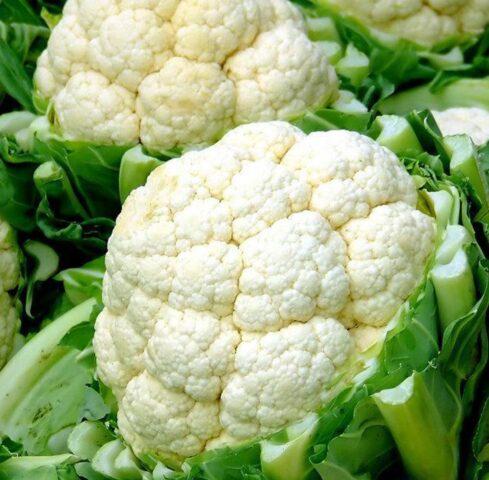
Cauliflower heads are milky white or greenish in color.
Broccoli has an even larger stem - it reaches a length of 90 cm. At its top there are many flower stalks. The buds are small, organized in groups, green or purple in color. Due to this, the heads are quite loose. They are used as food for preparing salads, soups and other dishes. The heads can also be frozen for storage throughout the winter. It is not necessary to boil them - just keep them in boiling water for 1-2 minutes.
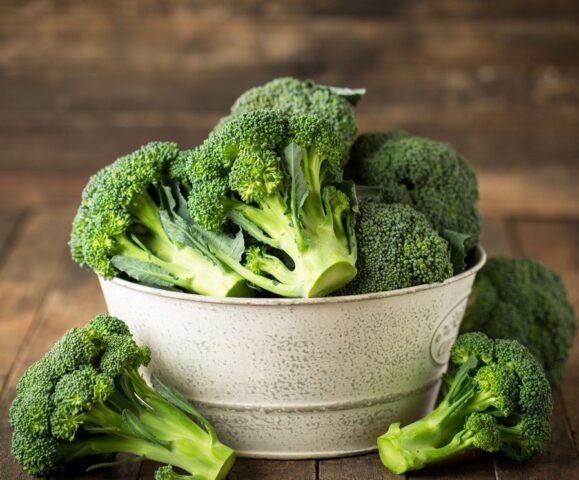
Broccoli florets are green or purple
As for the colored variety, the inflorescences here are much denser. Therefore, they require pre-cooking or baking. Used for preparing appetizers, salads, and served as a side dish for meat and fish dishes.
The leaves are also different: broccoli has light green, sometimes with a dark greenish tint, while cauliflower has pale or blue-green foliage. The shape is pinnately divided or entire, the leaves reach 40 cm in length.
Growing conditions
Broccoli is not as demanding in terms of growing conditions as cauliflower. The difference between the plants is that broccoli grows normally in moderately warm temperatures ranging from 16 to 25 degrees. However, the crop requires regular watering. Like other plants, it is responsive to feeding.
If you are a little late, the inflorescences will literally crumble and begin to bloom. They will no longer be used for food.
Cauliflower does not tolerate strong temperature fluctuations and is more demanding on conditions, so it is often grown in a greenhouse. She does not like frosts and drought. Grows well in cool temperatures between 15 and 18 degrees. It is responsive to stable sunlight, so it is better to plant it in open areas.
Requires fertile soil with a slightly acidic or neutral environment (pH from 6.0 to 7.0). The soil must be loose and moist and must contain compounds of boron, magnesium and copper. If the soil is depleted, it is fed with complex fertilizer. This is also a difference between the two cultures.
On poor soils, cauliflower can also grow if enough fertilizer is applied.At the same time, it is important to observe the condition of the leaves around the inflorescences - if they are green and look quite healthy, there is no reason for concern. But if the vegetable grows poorly, signs of rotting appear - dark spots on the white parts with an unpleasant odor.
Ripening and yield
If we talk about the timing of ripening, then broccoli varieties are divided into three groups according to this criterion:
- early - the harvest is harvested 60-70 days after emergence;
- average – after 70-80 days;
- late - after 85-100 days.
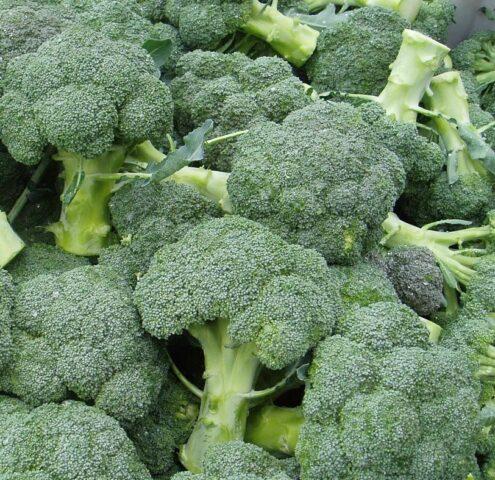
Broccoli ripens 20-30 days earlier
Very early varieties are not very productive, but the difference is that they are early ripening. The weight of the heads reaches 400-500 g, but in late varieties it reaches 1-1.2 kg. Productivity in greenhouse conditions can reach 2.7-3.1 kg per square meter. Such high indicators are characteristic of hybrids; in varieties they are smaller - 1.5-2 kg.
There is a certain difference between crops in terms of ripening and yield. Cauliflower takes longer to ripen:
- early ripening varieties 90-100 days;
- mid-season 110-120 days;
- late ripening 200 days.
Even if you create greenhouse conditions, the plants will take quite a long time to ripen, which is the difference with broccoli. The differences are also related to the yield indicator. Varieties in the greenhouse yield 2-3 kg per 1 m2, and individual hybrids - 5-6 kg and even 8-10 kg per square meter.
How many calories are in cauliflower and broccoli?
The difference between the caloric content and nutritional value of both crops is described in the table.
Data per 100 g | Cauliflower | Broccoli |
Calorie content, kcal | 23 | 34 |
Proteins, g | 1,8 | 2,8 |
Fats, g | 0,5 | 0,4 |
Carbohydrates, g | 1,8 | 4,0 |
Dietary fiber, g | 2,3 | 2,6 |
In both cases, we are talking about low-calorie foods, since a significant part of them (90%) is water.In this sense, there is no difference between plants.
Which is healthier: cauliflower or broccoli?
To answer the question of which is healthier, it is necessary to study what is the difference between the chemical composition of one and another culture. Broccoli contains the following compounds:
- vitamin A;
- group B (B1, B2, B5, B6, B9);
- C (100% daily value);
- K (85%);
- potassium;
- silicon;
- magnesium;
- calcium;
- phosphorus;
- iron;
- iodine;
- manganese;
- copper;
- selenium;
- zinc;
- chromium.
The difference with cauliflower is small, since it contains the same elements. But the mass fraction of vitamins and microelements is much lower here. Thus, the daily requirement of vitamin C in 100 g of pulp is only 50%, while in broccoli it is 100%. For vitamin K, respectively, 12% versus 85%.
There are also significantly fewer microelements in colored vegetables - on average 5-7% of the daily requirement. Therefore, we can definitely say that broccoli is healthier, and there is a significant difference.
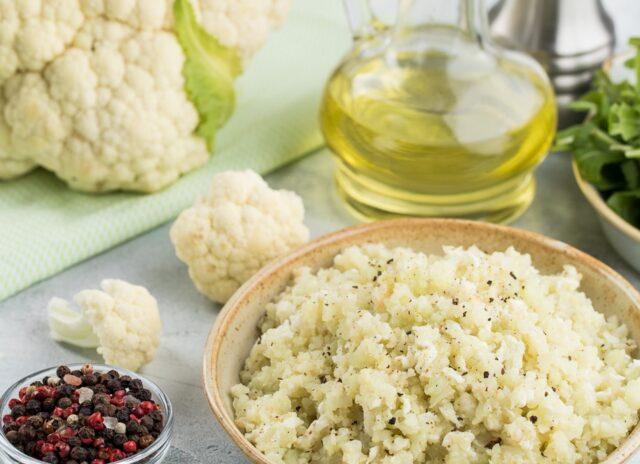
Cauliflower is used as a side dish
Application in medicine
Both products are used in dietary nutrition, including during pregnancy and lactation. There is not much difference in terms of beneficial properties - for example, broccoli is necessary for the body for the following reasons:
- improved digestion;
- strengthening the immune system;
- anti-inflammatory effect;
- anti-cancer effect;
- prevention of premature aging.
The beneficial properties of cauliflower are associated with the same features; there is no difference here either. But there are also differences, since the colored variety warns:
- diseases of the heart and blood vessels;
- diabetes;
- Parkinson's pathology;
- Alzheimer's disease.
Both products can be used for medical purposes.They are used in dietary meals as a side dish for fasting days. Plants are not suitable as medicines - they serve only as a prophylactic agent.
Which is better: cauliflower or broccoli?
It is difficult to answer this question unambiguously, since different criteria must be taken as a basis. When it comes to taste, the difference is not obvious. Broccoli has a richer flavor and a more tender texture when cooked. In this case, both plants can be prepared in all available ways:
- frying;
- stewing;
- baking;
- pickling.
The flavor range is approximately the same - without a pronounced shade, herbaceous. To taste the difference, vegetables are often mixed together in salads and other dishes, and also seasoned with oil, sour cream, salt, vinegar and other flavor enhancers.
As for other indicators, in terms of yield, cauliflower definitely wins almost 2-3 times. According to other criteria, the difference is clearly in favor of broccoli. It ripens faster, is less demanding on the composition of the soil and growing conditions, and is also more useful in its composition.
In fact, this phenomenon occurs as a result of digestion. Therefore, when cooking, you need to carefully monitor the time and consistency.
Conclusion
Broccoli differs from cauliflower in a number of ways, primarily in appearance. The colored form is larger, therefore it takes longer to mature, and its yield is higher. On the other hand, broccoli is healthier and less fussy. But in greenhouse conditions, both crops can be grown.
